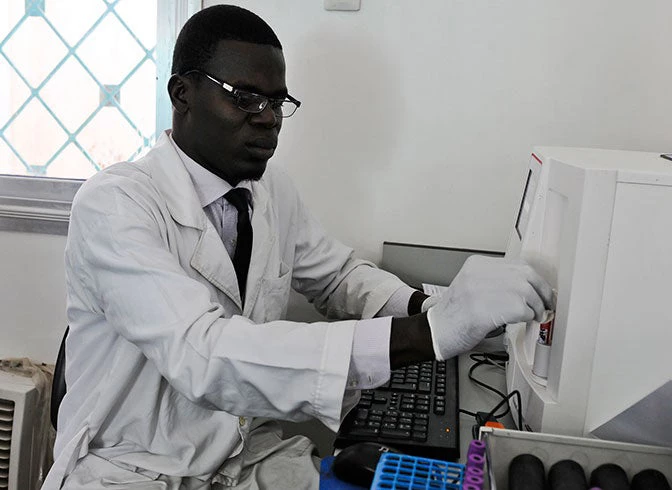
As I write these lines, I am sitting in an airplane returning from my first mission in Brazzaville, Republic of the Congo. My mission was for the education sector, and included visiting a few lower secondary public schools. As I listen to the pilot’s welcoming message, I find myself thinking about the children I met at the schools, and trying to assess the odds of their becoming pilots, engineers or scientists.
Since my visit, I have wondered whether the education policies implemented throughout Africa will be able to deliver the scientists and engineers needed to build up the continent, and transport it into the socio-economic emergence we all aspire to. But as suggested by recent statistics, Africa is falling behind, and as I see it, its education policies seem largely unlikely to put it on the path to prosperity, at least in their current state.
As we toured the secondary schools in Brazzaville, I saw dusty buildings, rusty infrastructure, overcrowded classrooms, and barely any textbook in the classrooms. This was no surprise. However, I was not fully prepared for such an acute shortage of mathematics and physics teachers. In a secondary school of 4,200 students – yes, you read that correctly – across four grades there were only two teachers for mathematics and two for physics out of a grand total of 53. Another school had one teacher for both mathematics and physics out of 26 teachers.
Digging deeper into the government’s education statistical yearbook, I found that in 2013-14, there were 305 public lower secondary schools catering to the education needs of nearly quarter of a million students. The teachers’ workforce was 2,472-weak – and among them, just 326 taught mathematics (of which 10 were women), while 249 taught physics (of which 14 were women). These 326 mathematics teachers are supposed to deliver 17,300 hours of class every week, a weekly average of 53 hours compared to the official workload of 20 hours.
In one of the schools visited, the 16 classes need 90 hours of mathematics per week, but even if the sole mathematics teacher works full time six days a week in a double-shift, he can only deliver 60 hours per week. Therefore, some classes had to be “sacrificed” and the school director was forced to make the tough choice that 7th and 8th-graders (the first two grades in secondary) would not be taught mathematics for now. We also learned that in the previous school year, 9th-graders were not taught physics for the entire year. Now in the 10th grade, these students will soon sit for the final exam to allow them to go to upper secondary with a significant handicap.
This short analysis begs the obvious question: why such a shortage of mathematics and science teachers? To come up with the answer, I looked into the most likely supply source of future mathematics teachers: the number of students in the last year of upper secondary school who are in a mathematics section (Série C). In 2014, 46,139 Congolese students sat the baccalaureate (the high school diploma). Among them 2,945 or 6.4% were on the scientific track (Série C) and only 1,104 succeeded. You might think this is bad, and I did, too until I looked into the numbers from Chad.
In 2013-14, there were 65,662 Chadian students in the last year of upper secondary likely to sit the baccalaureate. Only 762 or 1.2% were in Série C, with just 57 girls out of the entire country. And to put these numbers in perspective, Chad’s population is more than three times that of Congo.
With these statistics, I came back from mission wondering where Africa would find the people to build the roads, bridges, and other infrastructure that it so urgently needs. Where will Africa find the pilots to steer its economies and make its countries take off? And when China’s wages become too high and manufacturing jobs need to go somewhere else in the world, will Africa have the human capital to take up this opportunity? Clearly, we are a long way off from achieving our goals for Africa’s scientific progress, and a solution cannot come until all actors – including governments, educators, and development institutions – fully realize how dire the problem is and where it is rooted.
Each November, the United Nations celebrates the World Science Day for Peace, offering an opportunity to mobilize global actors around science and its role in peaceful and sustainable societies – from government officials to the media to school pupils. This is a great time to gain more clarity on the huge gap in science and mathematics education across Africa. Albert Einstein once said that if he had one hour to save the world he would spend 55 minutes defining the problem, and only 5 finding the solution – we need to understand the full scope of this problem before going about solving it.
To paint a fuller picture for Africa, I invite you to share the statistics you may have on the number of mathematics and physics teachers in lower and upper secondary public (and private) schools around Africa (as well as elsewhere in the world).


Join the Conversation